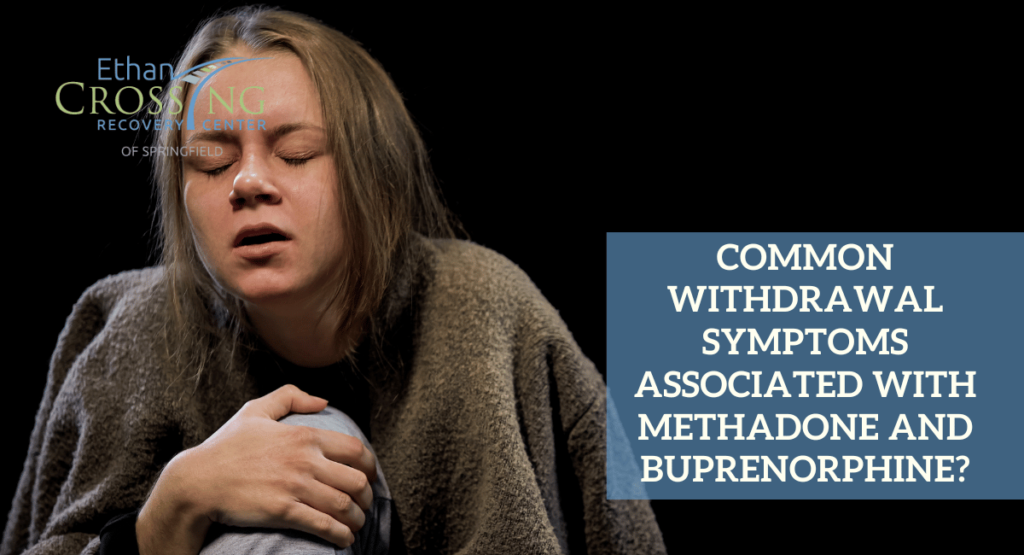When it comes to addressing opioid dependence, finding an effective treatment approach is crucial for individuals seeking recovery. Methadone and buprenorphine are two medications commonly used in Medication-Assisted Treatment (MAT) to help manage withdrawal symptoms, reduce cravings, and support long-term recovery. However, choosing between methadone and buprenorphine requires careful consideration of various factors, including individual needs, medical history, and treatment goals.
This article aims to explore the characteristics, benefits, and considerations associated with methadone and buprenorphine, assisting individuals and healthcare professionals in making informed decisions about the most suitable treatment option for opioid dependence. By understanding the nuances of each medication, individuals can embark on a path toward recovery with confidence and improved outcomes.
Table of Contents
What is Methadone?
Methadone is a synthetic opioid medication primarily used in the treatment of opioid dependence and chronic pain management. It belongs to the class of medications known as opioid agonists, which means it acts on the same receptors in the brain as other opioids, such as heroin or prescription painkillers, to reduce withdrawal symptoms and cravings.
Methadone is often dispensed in specialized clinics under strict supervision to help individuals stabilize their opioid use and support their recovery process. It is also used for long-term maintenance therapy to reduce the risk of relapse and improve overall functioning in individuals with opioid addiction.
What is Buprenorphine?
Buprenorphine is a medication primarily used in the treatment of opioid dependence and as a pain management option. It is classified as a partial opioid agonist, meaning it binds to the same receptors in the brain as other opioids but produces a milder response.
Buprenorphine helps to alleviate withdrawal symptoms and reduce cravings, making it an effective tool in opioid addiction treatment. It is available in various forms, including sublingual tablets, sublingual films, and long-acting injectable formulations. Buprenorphine is often prescribed as part of a comprehensive treatment program that includes counseling and support services to assist individuals in their recovery journey.
What are the Similarities of Methadone and Buprenorphine?
Methadone and buprenorphine are both medications used in the treatment of opioid dependence, and they share several similarities:
- Opioid Agonist: Both methadone and buprenorphine are classified as opioid agonists, meaning they activate opioid receptors in the brain. They help to alleviate withdrawal symptoms and reduce cravings associated with opioid dependence.
- Medication-Assisted Treatment (MAT): Methadone and buprenorphine are essential components of medication-assisted treatment programs for opioid addiction. These programs combine medication with counseling and behavioral therapies to provide a comprehensive approach to recovery.
- Long-acting Formulations: Both medications are available in long-acting formulations, allowing for once-daily or less frequent dosing. This helps to improve treatment adherence and stability, reducing the need for multiple daily doses.
- Reducing Illicit Drug Use: Methadone and buprenorphine have been shown to reduce illicit opioid drug use and the associated risks, such as overdose and transmission of infectious diseases like HIV and hepatitis.
- Legal Prescriptions: Both medications can only be obtained through a legal prescription from a qualified healthcare provider. They are typically dispensed in specialized clinics or approved healthcare settings to ensure proper supervision and monitoring.
Note that while methadone and buprenorphine have similarities, there are also differences in their pharmacological properties, effectiveness, and side-effect profiles. The choice between the two medications depends on individual circumstances and should be made in consultation with a healthcare professional.
What are the Differences Between Methadone and Buprenorphine?
Methadone and buprenorphine, although both used in the treatment of opioid dependence, have several differences:
- Pharmacological Properties: Methadone is a full opioid agonist, meaning it activates opioid receptors fully. Buprenorphine, on the other hand, is a partial opioid agonist, meaning it has a ceiling effect where its opioid effects plateau even with increasing doses.
- Administration: Methadone is typically administered daily in specialized clinics under strict supervision. Buprenorphine can be prescribed by qualified healthcare providers, and in some cases, patients can take it at home once stabilized.
- Treatment Setting: Methadone is often provided in highly regulated clinics, requiring frequent visits and monitoring. Buprenorphine can be provided in a variety of healthcare settings, including specialized clinics and office-based settings.
- Availability: Methadone is available in generic formulations, while buprenorphine is available in both branded and generic forms.
- Safety Profile: Methadone has a higher risk of overdose compared to buprenorphine, especially during the early stages of treatment or when used inappropriately. Buprenorphine has a lower risk of overdose due to its partial agonist properties.
- Withdrawal Severity: Methadone withdrawal can be more prolonged and intense compared to buprenorphine withdrawal due to its longer half-life.
- Prescribing Regulations: The prescribing of methadone is subject to stricter regulations and requires specialized training and licenses for healthcare providers. Buprenorphine prescribing regulations vary by country, but in many cases, healthcare providers need to complete specific training and obtain a waiver to prescribe it.
The choice between methadone and buprenorphine depends on various factors, including the individual’s specific needs, medical history, and treatment goals. It is crucial to consult with a healthcare professional experienced in opioid addiction treatment to determine the most appropriate medication for a person’s unique circumstances.
Methadone and Buprenorphine in Medication-Assisted Treatment?
Methadone and buprenorphine are both widely used in Medication-Assisted Treatment (MAT) for opioid addiction. MAT combines the use of medications with counseling and behavioral therapies to provide a comprehensive approach to treating opioid dependence. Here’s how methadone and buprenorphine are utilized in MAT:
Methadone in MAT:
- Methadone is a full opioid agonist and has a long duration of action. It helps to relieve withdrawal symptoms and reduce cravings, allowing individuals to stabilize and function without experiencing opioid intoxication.
- Methadone is typically dispensed daily in specialized clinics under close supervision to ensure appropriate use and prevent diversion.
- It is often used for long-term maintenance therapy in individuals with opioid addiction, reducing the risk of relapse and improving overall functioning and quality of life.
- Methadone treatment is highly regulated, and patients must adhere to the prescribed dosing schedule and attend counseling and support services as part of their comprehensive treatment plan.
Buprenorphine in MAT:
- Buprenorphine is a partial opioid agonist with a ceiling effect, meaning it produces weaker opioid effects compared to full agonists like methadone.
- Buprenorphine reduces withdrawal symptoms and cravings, helping individuals stabilize their opioid use without experiencing intense euphoria or sedation.
- Buprenorphine can be prescribed by qualified healthcare providers in office-based settings, increasing accessibility and convenience for patients.
- It is available in different formulations, including sublingual tablets, sublingual films, and long-acting injectable formulations, providing flexibility in treatment options.
- Buprenorphine treatment is often combined with counseling and behavioral therapies as part of a comprehensive treatment plan.
Both methadone and buprenorphine have been shown to be effective in reducing illicit opioid use, improving treatment retention, and reducing the risk of overdose and other associated harms.
What are the Potential Side Effects of Methadone and Buprenorphine??
Both methadone and buprenorphine can cause side effects, although the specific side effects and their severity can vary from person to person. Here are some potential side effects associated with each medication:
Methadone:
- Sedation or drowsiness
- Constipation
- Nausea and vomiting
- Dry mouth
- Sweating
- Weight gain
- Sexual dysfunction
- Respiratory depression (rare, but can occur at high doses)
- QT interval prolongation (affects the heart’s electrical activity, potentially leading to abnormal heart rhythms)
Buprenorphine:
- Headache
- Nausea and vomiting
- Constipation
- Insomnia or sleep disturbances
- Sweating
- Dizziness or lightheadedness
- Dry mouth
- Injection site reactions (for injectable formulations)
- Withdrawal symptoms if taken too soon after a full opioid agonist
It’s important to note that these lists do not contain every side effect of each medication, and other side effects may occur. Additionally, the severity and frequency of side effects can vary depending on the individual and their specific circumstances.
Common Withdrawal Symptoms Associated with Methadone and Buprenorphine?
The withdrawal symptoms associated with methadone and buprenorphine can vary in intensity and duration depending on factors such as the individual’s dosage, duration of use, and overall physical and psychological health. Here are some common withdrawal symptoms that may occur:
Methadone Withdrawal Symptoms:
- Body aches and muscle pain
- Nausea and vomiting
- Diarrhea
- Sweating
- Chills or goosebumps
- Anxiety or restlessness
- Insomnia
- Runny nose and watery eyes
- Increased heart rate
- Dilated pupils
- Cravings for opioids
Buprenorphine Withdrawal Symptoms:
- Nausea and vomiting
- Diarrhea
- Abdominal cramps
- Muscle aches and pain
- Anxiety or irritability
- Insomnia or sleep disturbances
- Runny nose and watery eyes
- Sweating
- Dilated pupils
- Cravings for opioids
The withdrawal process is often managed through a gradual tapering of the medication under the guidance of a healthcare professional to minimize discomfort and ensure a safe transition. Medical supervision and support during the withdrawal process are crucial to address any complications and provide appropriate care.
Considerations for Pregnant People Using Methadone and Buprenorphine
Pregnant individuals who are using methadone or buprenorphine for opioid addiction treatment require specific considerations to ensure the health and well-being of both the parent and the baby. Here are some important considerations:
Methadone in Pregnancy:
- Methadone has been used for several decades in pregnant individuals with opioid addiction and has demonstrated safety and effectiveness in reducing illicit opioid use during pregnancy.
- Pregnant individuals on methadone should receive comprehensive prenatal care that includes monitoring of maternal health, fetal development, and appropriate psychosocial support.
- Methadone doses may need to be adjusted during pregnancy due to changes in metabolism and increased blood volume. Close monitoring by a healthcare provider is essential to ensure the appropriate dosage.
- It is important to balance the benefits of methadone in reducing the risks associated with opioid use disorder against potential risks to the fetus. Methadone treatment can help minimize withdrawal symptoms and reduce the risk of relapse, which can have adverse effects on maternal and fetal health.
- Neonatal abstinence syndrome (NAS) can occur when newborns are exposed to opioids during pregnancy. Methadone-exposed infants may experience withdrawal symptoms after birth, but with appropriate medical management, these symptoms can be effectively treated.
Buprenorphine in Pregnancy:
- Buprenorphine is also considered a safe and effective treatment option for pregnant individuals with opioid addiction.
- Buprenorphine has a lower risk of neonatal withdrawal compared to methadone, although some infants may still experience withdrawal symptoms.
- Pregnant individuals on buprenorphine should receive prenatal care and close monitoring by a healthcare provider experienced in managing opioid use disorder during pregnancy.
- Buprenorphine is available in different formulations, and the choice of formulation should be based on individual circumstances and the healthcare provider’s recommendation.
- The dosage of buprenorphine may need adjustment during pregnancy, and healthcare providers will work closely with the individual to determine the appropriate dosage to maintain stability and minimize risks.
- As with methadone, neonatal abstinence syndrome can occur in infants exposed to buprenorphine during pregnancy, but proper medical management can help alleviate withdrawal symptoms.
Pregnant individuals must receive specialized care from healthcare providers experienced in managing opioid use disorder during pregnancy.
Can Methadone and Buprenorphine be Used Together in Opioid Dependence Treatment?
Yes, methadone and buprenorphine can be used together in the treatment of opioid dependence, although it is less common and requires careful consideration and close medical supervision. There are a few scenarios in which the combination of methadone and buprenorphine may be considered:
1. Inadequate response to monotherapy
Some individuals may not achieve optimal stabilization or symptom control on either methadone or buprenorphine alone. In such cases, a healthcare provider may consider combining the two medications to provide greater relief from withdrawal symptoms and cravings.
2. Tapering or transitioning from one medication to another:
Combination therapy can be used during a controlled and gradual transition from methadone to buprenorphine or vice versa. This approach helps to minimize withdrawal symptoms and increase the chances of successful transition and medication adherence.
3. Complex cases
In certain complex cases, such as individuals with a history of high-dose opioid use or those with significant opioid tolerance, a healthcare provider may decide to combine methadone and buprenorphine to provide more comprehensive opioid receptor coverage and ensure adequate stabilization.
It’s important to note that the combination of methadone and buprenorphine should only be prescribed and managed by qualified healthcare professionals experienced in addiction medicine. This approach requires careful monitoring and adjustment of medication dosages, as well as ongoing counseling and support to ensure the safety and effectiveness of treatment.
Bottom Line
In conclusion, both methadone and buprenorphine are valuable medications for the treatment of opioid dependence. The choice between the two depends on individual factors such as medical history, treatment goals, and personal preferences. Methadone is a full opioid agonist with a long duration of action, while buprenorphine is a partial agonist with a lower risk of overdose.
Consulting with a healthcare professional experienced in addiction medicine is essential to determine the most appropriate medication and dosage for each individual. Ultimately, the goal is to find a treatment approach that supports long-term recovery and improves overall well-being.












